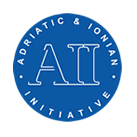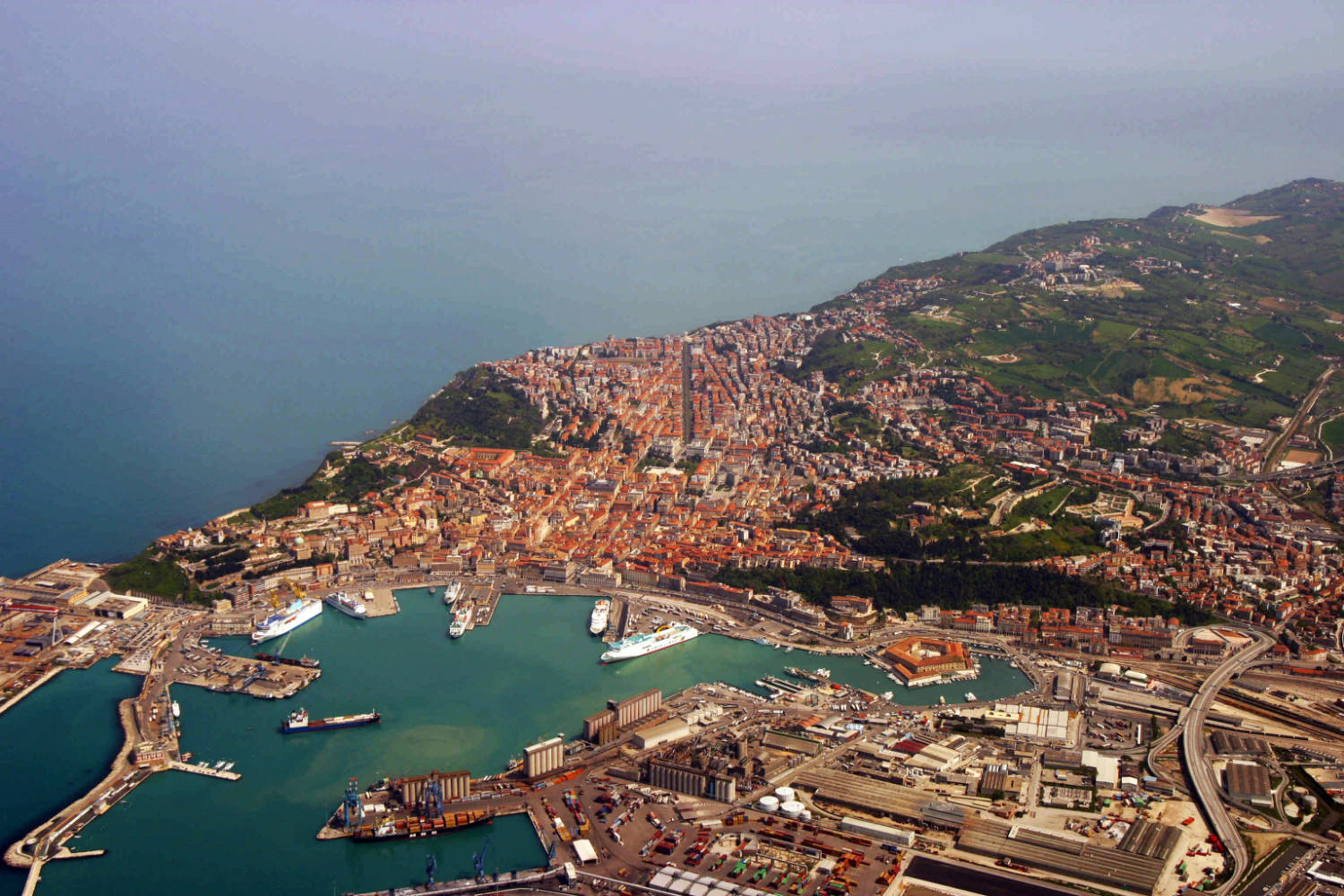Eusair
THE ADRIATIC and IONIAN MACRO REGION
EU Strategy for the Adriatic and Ionian Region (EUSAIR)
The Macroregional approach is an innovative mode of territorial cooperation among regions and nations, with balanced and sustainable development as a shared goal. The base of its philosophy is that common challenges and opportunities can better be faced through multilevel and more focused cooperation.
The Macroregion which is based on the EU Strategy for the Adriatic Ionian Region (EUSAIR) is not a geographical entity, but a functional area, composed of national, regional, and local bodies pooling their energies to tackle a number of shared issues
The Macroregion is not a further institutional level within the European Union( like states, regions, municipalities, etc.) but rather a network, an operating mode or, more precisely, a joint Initiative involving several European, national, regional and stakeholders, policies and funding programmes.
For this reason, EUSAIR is not an all-embracing initiative, but rather focuses on a number of challenges identified and shared by all partners.
EUSAIR is also a meaningful factor of reconciliation among territories of the Adriatic and Ionian seas and, at the same time, of acknowledgment and rediscovery of unifying values that have characterized the two shores for centuries.
Reasons for an EU Strategy for the Adriatic and Ionian Region
- The Region faces several challenges which will be tackled more successfully together than on a purely national or local level. Socio-economic disparities (e.g. in terms of GDP per capita and unemployment rates); a lack of research-to-business networks; shortcomings in transport links (road, rail and air) and vessel traffic congestion; inadequate interconnections of electricity grids; unsustainability of fisheries; environmental threats such as marine pollution, the preservation of a highly diverse marine environment and the adverse effects of climate change (in the form of rising sea levels, flooding, drought, soil erosion and forest fires);and insufficient institutional and administrative capacity.
- There are also some promising opportunities that can be capitalized on, including: the Blue economy - notably sustainable seafood production and consumption, maritime, coastal and cruise tourism as well as innovative blue technologies; the potential for improved land-sea connectivity and intermodal transportation to increase the competitiveness of hinterland economies. The Region is one of outstanding natural beauty and rich cultural, historic and archaeological heritage with potential for sustainable, responsible and diversified tourism.
Better coordination and cooperation between the countries and regions concerned is needed to address shared challenges and better exploit opportunities. On this basis, the European Council of December 2012 requested the European Commission to present a new macro-regional strategy for the Adriatic and Ionian Region before the end of 2014.
Geography
The Region is a functional area primarily defined by the Adriatic and Ionian Sea basin. Home to more than 70 million people, the Region plays a key role in strengthening geographical continuity in Europe.
The Strategy builds on the Adriatic-Ionian Initiative, which concerns eight countries: four EU Member States (Croatia, Greece, Italy, Slovenia) and four non-EU countries (Albania, Bosnia and Herzegovina, Montenegro, Serbia).
The involvement of the European Union
The role of the European Union is to facilitate and coordinate cooperation, especially in the Strategy's initial phase. However, leadership of the Strategy should come from the countries and regions involved themselves.
Involvement of the EU will facilitate a cross-sector approach consistent with different EU policies. It will highlight possible complementarities and synergies between policies and programmes currently carried out in the Region. It will help aligning and mobilizing the wide range of funds and programmes currently available in the Region to support the achievement of the Strategy's goals.
The EUSAIR builds on the already existing Maritime Strategy for the Adriatic and Ionian Seas is an integral part of this new broader macro-regional strategy. The new Strategy can learn on the experience of the other two current macro-regional strategies ( EU Strategy for the Baltic Sea Region, EU Strategy for the Danube Region).
See also: the Report on the added value of the macro-regional Strategies (June 2013)
Objectives of the Strategy
The two general objectives of the EUSAIR are:
- to promote sustainable economic and social prosperity of the Region through growth and jobs creation, by improving its attractiveness, competitiveness and connectivity, while preserving the environment and ensuring a healthy and balanced marine and coastal ecosystems.
- to contribute to the EU integration of the participating Western Balkan candidate and potential candidate countries, by bringing together countries with much shared history and geography.
The idea is to identify concrete joint priorities for the macro-region, making the best use of existing institutions, policies and funds and setting realistic goals for maximum impact.
Fields of Interest
The following four themes/pillars have been identified:
- Blue Growth, aiming at boosting innovative marine and maritime growth by promoting jobs and business opportunities in the Blue economy;
- Connecting the Region, aiming at improving connectivity in terms of transport and energy;
- Environmental quality, focusing on coastal and marine biodiversity and pollution of the sea, as well as on transnational terrestrial habitats and biodiversity; and
- Sustainable Tourism, aiming at developing the full potential of the Region in terms of innovative quality tourism while boosting businesses and creating stable jobs
Capacity building -including communication-, research & innovation and SMEs development are cross-cutting aspects, whereas due account is to be taken of mitigation of and adaptation to climate change effects as well as of efficient disaster risk management (including prevention) as horizontal principles underpinning all actions carried out under the four pillars.
The four themes were first identified in meetings of the Foreign Ministers of the participating countries with Commissioner Hahn in November 2012. From September to December 2013, a stakeholders’ consultation was held across the Region on the content of the future Action Plan of the Strategy, with the aim of reflecting the real needs of the inhabitants of the area. The contributions gathered were further discussed at a Stakeholder Conference of the EU Strategy for the Adriatic and Ionian Region, jointly organised in Athens on 6-7 February 2014 by the Greek Presidency of the Council of the European Union and the European Commission.
Benefits for the Adriatic and Ionian Region
The strategy builds on existing initiatives and proposes new ones designed to:
- Ensure the sustainable use of sea and coasts and the coexistence of different economic activities by making 100% of the waters under national jurisdiction subject to Maritime Spatial Planning and 100% of the coast lines subject to Integrated Coastal Management;
- Improve the sustainability of fisheries by adopting and implementing multiannual fisheries management plans at sea-basin level for all threatened stocks;
- Increase safety and security at sea by monitoring maritime traffic through a single shared system and a joint contingency plan for oil spills and other large-scale pollution event;
- Minimise eutrophication and improve the quality of the sea water by reducing marine litter, nutrient flows and other pollutants;
- Protect biodiversity by covering at least 10% of the Adriatic and Ionian Seas with Marine Protected Areas;
- Facilitate nautical and cruise tourism through mutual recognition of nautical licenses and easier visa procedures between countries.
- Increase off-season arrivals by 50% to even out and sustainably manage yearly tourist flows.
All macro-regional stakeholders can benefit from the Strategy, including: local, regional and national administrations, universities, clusters, SMEs, civil society organisations and associations, private partners, and international investors. And, above all, the citizens living in the Region.
Funding of the Strategy
Although the Strategy does not come with extra EU financing, the EUSAIR will mobilise and bring together existing EU and national funding instruments.
In particular the European Structural and Investment Funds (ESIF) as well as the Instrument for Pre-accession Assistance (IPA) for 2014-2020, provide significant financial resources and a wide range of tools and technical options.
EU Funds and programmes of relevance for the specific pillar to be covered include, inter alia:
- The European Maritime and Fisheries Fund and Horizon 2020, which targets Blue Growth as one of its focus areas for RTD, can lend key support to the implementation of actions and projects under the theme Blue Growth.
- For Connecting the Region the Connecting Europe Facility (CEF) 2014-2020 supports the development of high-performing, sustainable and efficiently interconnected trans-European networks in the field of transport, energy and digital services.
- For the Environmental quality, funds under the EU's LIFE programme, which are also open to non-EU Member States.
- Sustainable Tourism can benefit from the EU's COSME programme for Small and Medium Sized Business.
Other finance is also available, notably from the Western Balkans Investment Framework, the European Investment Bank (EIB) and other International Financial Institutions. These funds and instruments should create significant leverage and attract further funding from private investors.
Implementation Phase of EUSAIR
Experience with existing macro-regional strategies shows that good and stable governance is crucial to get the most out of this kind of cooperation. The recent Commission’s Report on governance of Macro-Regional Strategies of 20 May 2014 identifies two main needs in order to bring clearer results and greater impact: stronger political leadership and effective decision-making, and greater clarity and better organisation for day-to-day actions.
The Report clearly places the responsibility on participating countries themselves for ensuring that the Strategy and its accompanying Action Plan are implemented in practice.
A pair of countries - one EU Member State and one non-EU country - coordinated the development of the Action Plan for each pillar:
- Greece and Montenegro on "Blue Growth",
- Italy and Serbia on "Connecting the Region"
- Slovenia and Bosnia and Herzegovina on "Environmental Quality",
- Croatia and Albania on "Sustainable Tourism".
Effective and straightforward governance structures are being put in place after the Strategy has been endorsed by the Council on 24 October 2014 under the Italian Presidency of the EU.
Technical and operational tasks will be supported by the future Adriatic-Ionian transnational cooperation programme under European Territorial Cooperation goal.
Endorsement of EUSAIR
In the European Council Conclusions of Friday 24 October the Head of State and Government of the 28 Member States of the European Union adopted the "EU Strategy for the Adriatic Ionian Region" (EUSAIR) asking to "all relevant actors to implement it without delay, as outlined in the Council conclusions of 29 September 2014".
After more than four years of work and commitment by AII Governments and regional stakeholders, the Adriatic Ionian Macro Region is a reality and the implementation phase is going to begin by the end of this year.
As stressed by the Council Conclusions of 29 September, the new Strategy benefits from:
- The long experience of the intergovernmental Adriatic Ionian Initiative which fostered cooperation at the level of civil society (Chambers of Commerce, Cities, Universities);
- The Maritime Strategy for the Adriatic and Ionian Seas adopted in November 2012;
- The coincidence with the programming period 2014-2020;
- The lessons learned from the already existing macroregional strategies.
The EUSAIR will address major challenges of the region through its four pillar's architecture focusing on Blue Growth, Connecting the Region, Environmental Quality and Sustainable Tourism.
The European Council invited the Commission to regularly report about the progress made "towards the achievement of target and relevant milestones, and possible development of the Strategy and its Action Plan, by the end of 2016 in the first instance".
See here the Communication and Action Plan on the EU Strategy for the Adriatic and Ionian Region
FOR MORE INFO CONSULT THE WEB SITE OF EUSAIR http://www.adriatic-ionian.eu/



